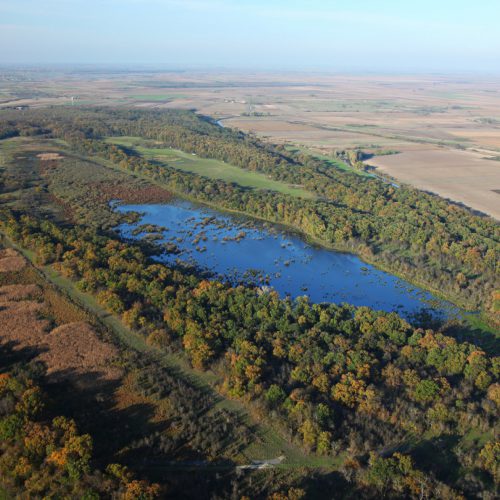News
Wetland restoration in the Amazon of Europe
After restoring Semenjača pond, WWF plans to continue the restoration of natural habitats in the Special Nature Reserve "Gornje Podunavlje". This protected area represents a remarkable marshland and is as such one of the most important protected areas locally, regionally and in Europe. The project, which is implemented with the financial support of the Coca-Cola Foundation, started in January 2011 and is part of a wider initiative for the restoration of wetlands along the Danube.
“The preservation of protected areas and the revitalization of endangered aquatic habitats are of greatest importance for a healthy environment, the mitigation of climate change impacts and for sustainable development of local communities. The revitalization of the very important marsh habitats in Štrbac within the Special Nature Reserve "Gornje Podunavlje" is an excellent example of how great results can be achieved through collaboration of multiple partners, including the Provincial Secretariat, which works on the segment of environmental protection,” said Dr Slobodan Puzović, the Provincial Secretary for Urban Planning, Construction and Environmental Protection.
Wetlands and forests of Gornje Podunavlje region are protected ever since 2001 and cover an area of about 20,000 m², providing valuable habitat for many endangered species, such as the white-tailed eagle, the black stork and the otter.
The restoration of wetlands within the planned Transboundary Biosphere Reserve “Mura-Drava-Danube (TBR MDD), which is also called the “Amazon of Europe”, includes not just Serbian areas, but also wetlands in Austria, Croatia and Hungary. The total area of wetland habitats planned for restoration until 2020 is 53 km², increasing their water capacity by 12 million cubic meters.
“WWF is constantly working on the protection and restoration of floodplains and wetlands for the benefit of both: nature and people. Revitalization of Štrbac helps to preserve species through habitat restoration, the provision of natural water regime, as well as the development of eco-tourism in this area. In Serbia, WWF has so far revitalized 37 hectares of marshland area and the work will continue next year. There is a huge natural potential and it is upon all of us to decide whether we will use it wisely or destroy it,” said Duška Dimović, Director of WWF programme in Serbia.
The restoration of wetlands in the area of the Amazon of Europe will also contribute to the implementation of the European directives for water and nature protection, especially of the Birds Directive, the Habitats Directive, the Water Framework Directive and the Floods Directive. WWF believes that with joint efforts the degradation of the natural environment can be stopped and that through biodiversity conservation a future in which humans live in harmony with nature can be built.
For more information please click here: Valuing and conserving ecosystem services: a scoping case study in the Danube Basin



